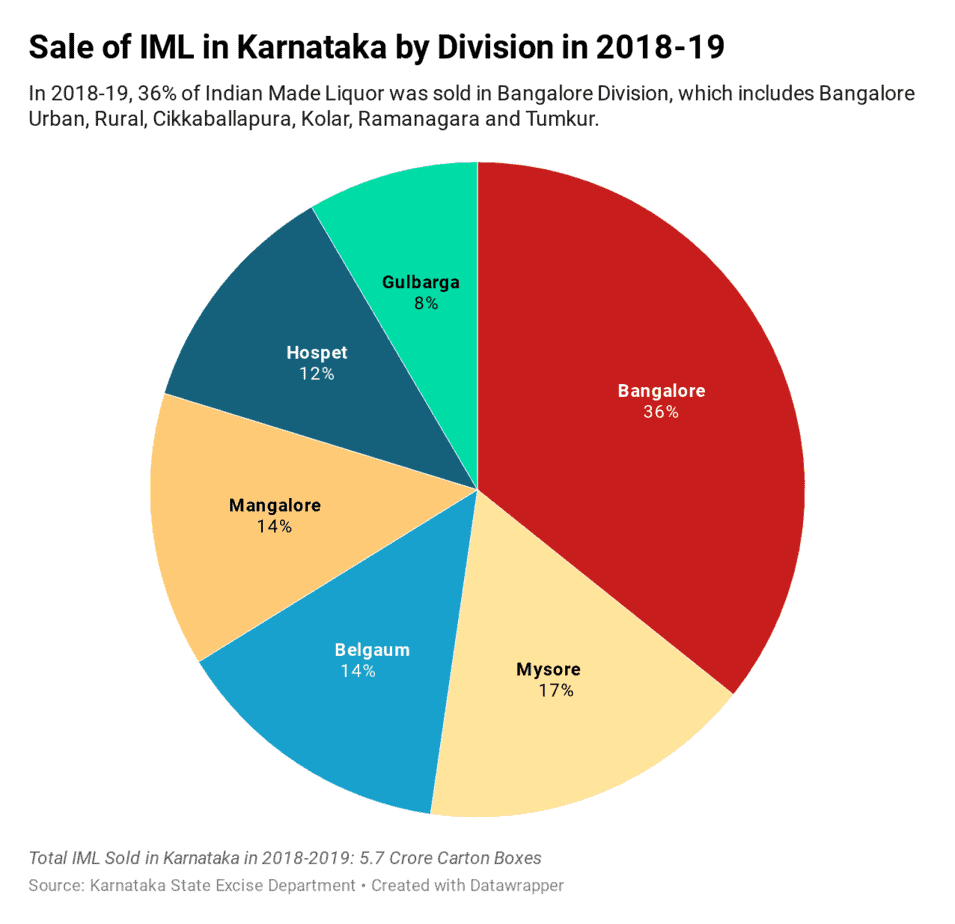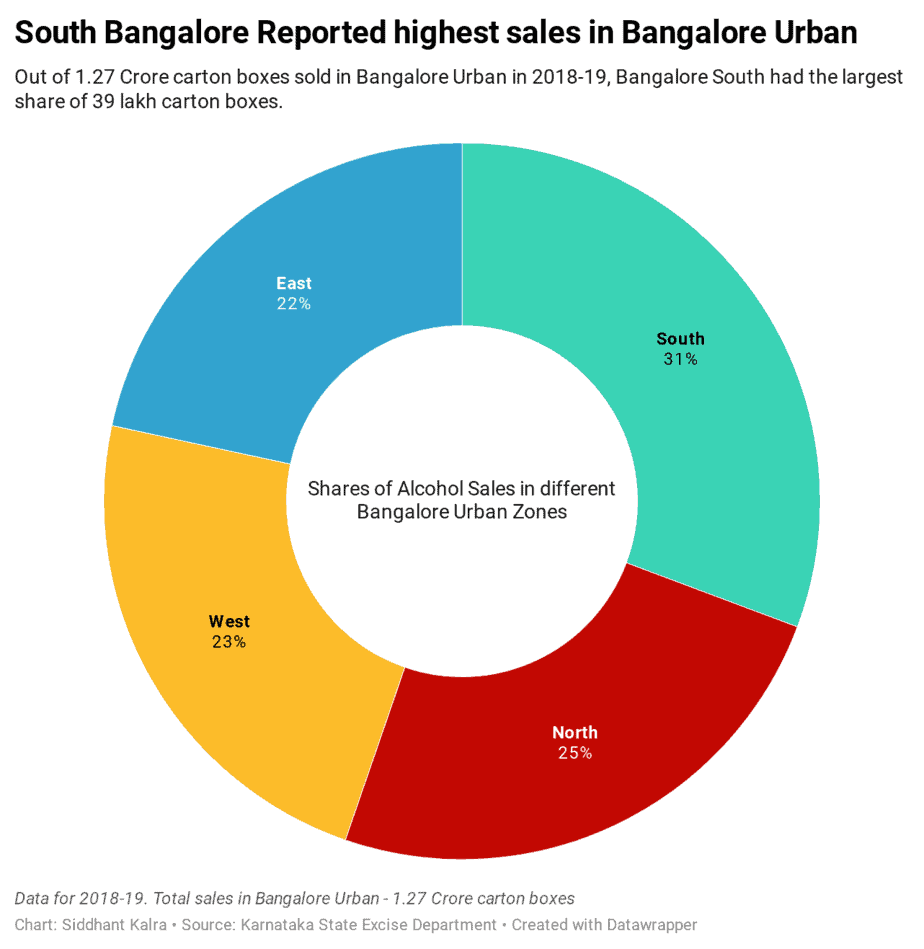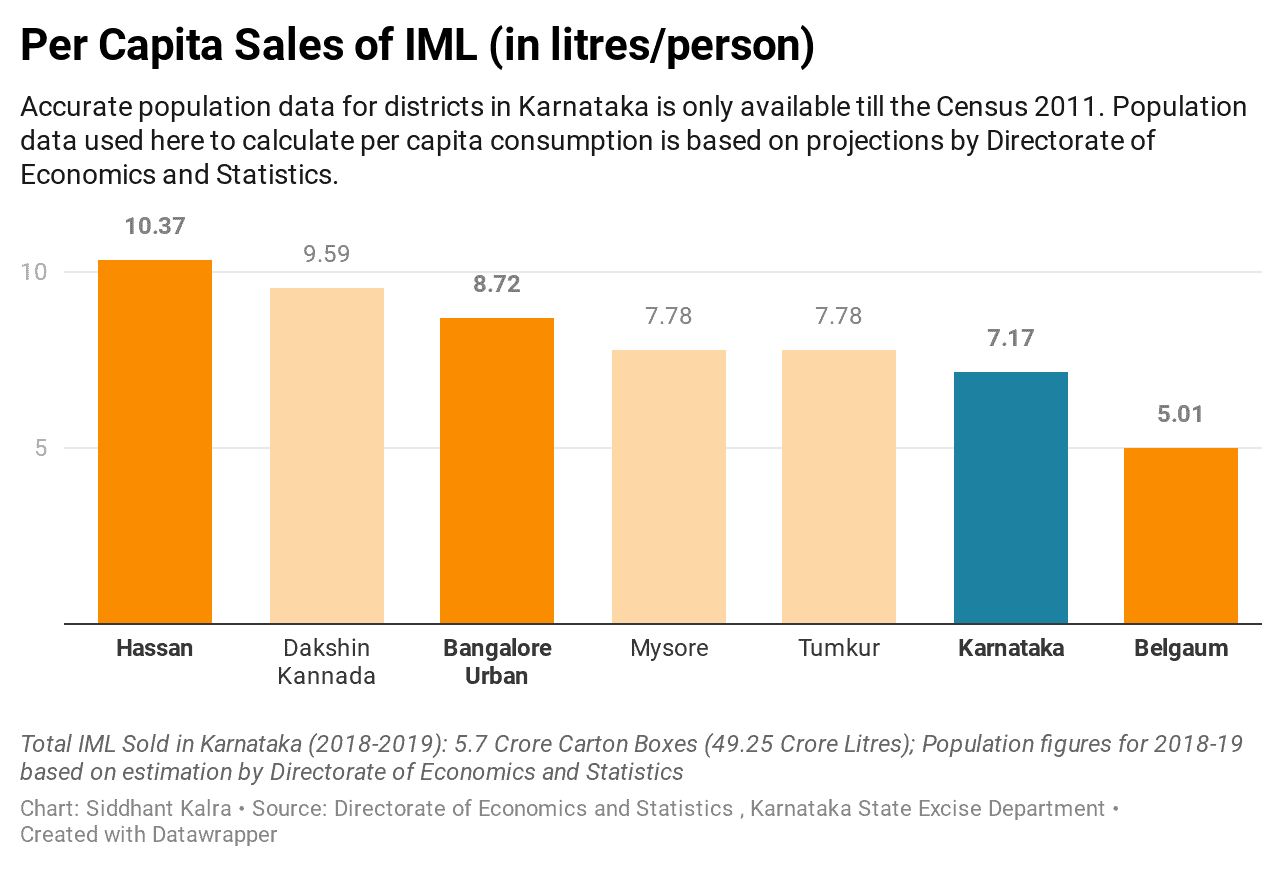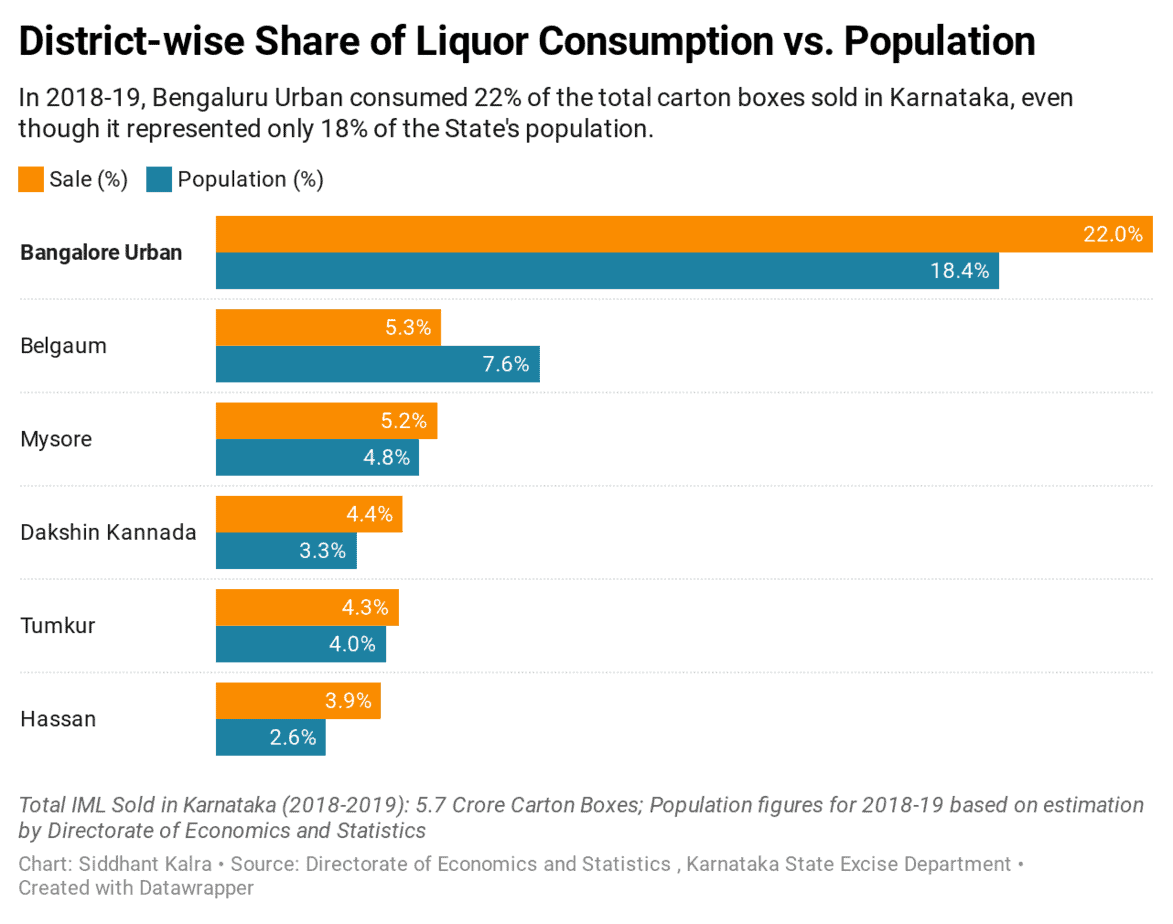Karnataka sold over Rs. 45 Crore worth of alcohol on the first day of the re-opening of standalone liquor shops on May 4. The figure surprised many and photographs of people waiting in long queues did the rounds on social media. However, the shock and awe proved to be short-lived, as the state made Rs. 197 Crore in sales, marking a 337% spike from the first day.
Bengaluru too experienced a similar rush. Just one store in the city, Tonique, reportedly made over Rs. 4 Crore – or close to 10% of the state’s total in sales just on the first day of re-opening.
On May 4, the centre opened up liquor shops all over the country, except in containment zones, even as the lockdown was extended for a couple more weeks. The move was a part of measures taken to open up the economy and allow for much-needed revenue for states.
Tonique’s 10% coverage of state sales reveals an interesting trend – Bengaluru’s overwhelming share in Karnataka’s liquor revenue. It also begs the question, do Bangaloreans drink a lot?
How Much Does Bengaluru Drink?
Excise Department alcohol consumption data is expressed in sales of carton boxes of Indian Made Liquor (IML) and Beer. “Each carton box has around 8.64 litres of liquor and 7.8 litres of beer,” says S.L. Rajendra Prasad, Addl. Commissioner of Excise (IML). These are the numbers used to express alcohol sales in litres.
Karnataka sold 5.7 Crore carton boxes (49.24 Crore litres) of Indian Made Liquor (IML) and made an average of Rs. 54 Crore per day from liquor sales in 2018-19. Out of the 5.7 Crore boxes, a little over 2 Crore or 17.2 Crore litres (36%) were sold in Bangalore Division (five districts other than Bangalore Urban. For Bangalore Urban, it was 10.9 Crore litres of IML.
The sale of alcohol is a major source of revenue for the state. In 2018-19, Karnataka excise department made Rs. 20,000 Crore from the sale of IML and Beer. Calculating for Bangalore Urban’s share in those sales, the city’s contribution was Rs. 4,303 Crore. In comparison the entire BBMP budget for this year is slated to be Rs. 10,895 Crore.
In the excise department data, Bangalore division is one of six divisions and contains Bangalore Urban, Bangalore Rural, Cikkaballapura, Kolar, Ramanagara and Tumkur districts.

Consumption is spread quite unevenly between districts in Bangalore division. Bangalore Rural, Chikkaballapura, Kolar and Ramnagara districts sold about 10-14 lakh IML carton boxes (86.4 lakh – 1.21 crore litres) in 2018-19. Tumkur sold a higher share of around 24.8 lakh boxes (2.14 crore litres) .
Bangalore Urban District within Bangalore Division constituted a majority share, not just in the division, but also in the state.
Bangalore Urban District sold 1.2 Crore (10.9 Crore litres) of the state's 5.7 Crore boxes (49.24 Crore litres) and Bangalore division's 2 Crore boxes (17.28 Crore litres). It alone made up for one-fifth or 22% of Karnataka's total sales in 2018-19, while domiciling 18.4% of the state's population.
No other district even came close to Bangalore Urban. The second highest consumption was in Belgaum district, which consumed 5.3% of the state’s total IML distributed among 7.6% of the state’s population.

Within Bangalore Urban district, Bangalore South had the highest sales of alcohol with 39 lakh boxes (3.4 Crore litres), while Bangalore East had the lowest with around 27 lakh (2.3 Crore litres).
Per Capita Consumption and Growth
While the consumption share of liquor shows which districts had most IML sales in 2018-19, it doesn’t account for per capita sales. The picture becomes clearer accounting for populations of individual districts. Despite making the second-highest sales of IML in the state in 2018-19, Belgaum only had Per Capita Sales of 5.03 litres per person – far lower than the state average of 7.19 litres per person.
Like Hassan and Dakshina Kannada, Bangalore Urban has a per capita consumption of over 1 box per person in 2018-19 (1.009 boxes or 8.72 litres per capita).

In terms of Beer sales, it’s surprising to note that Karnataka sold lesser beer than IML in 2018-19 – just over 3 crore boxes or 23.4 crore litres of beer. The same was true for Bangalore Urban, which sold 1 Crore boxes or 8.43 crore litres of beer. The trend of Bangalore Urban’s majority share continued with beer, except it was even larger for beer – one-third of the state’s beer supply.
Bangalore Urban’s per capita consumption of just 8.72 litres of IML alcohol and 6.6 litres of beer may not seem like much. But this figure includes both drinking and non-drinking residents of the district. While official data on Bangalore Urban’s drinking population isn’t recorded, we can make a rough calculation.
There are 91 lakh registered voters (18+) in Bangalore Urban as of 2019. While this list is likely to be bloated, we can use it as a proxy for the adult population (21+) of Bangalore Urban. A WHO-NIMHANS study on alcohol consumption in Bengaluru estimates that 33% of its adults consumes alcohol regularly.
A rough calculation would peg Bangalore Urban's per capita (drinking population) consumption at about 36.26 litres of IML and 27.7 litres of beer per person in 2018-19.
The city has also played a role in the growth of sales in the state. For instance, Karnataka sold over 63 lakh boxes of IML in seven years between 2012 and 2019, at a growth rate of 12.44%. Out of these boxes, 22.2 lakh boxes were sold just in Bangalore Urban at a growth rate far higher than that of the state – 21%.
Between 2001-2011, Bangalore Urban district’s population increased by a staggering 46.7%, which makes it one of the fastest-growing urban districts in the country. This explosion of population is the reason behind Bangalore’s majority share in the state’s IML sales.
“Most of the booze shops are in Bangalore. That’s why Bangalore has such a high share of alcohol sales in the state”, says Excise Department’s Prasad, referring to the city’s over 900 alcohol stores.
So, in conclusion, is it correct to say that Bangaloreans drink a lot? Well, not quite. It would be more accurate to say that every year, there are more and more Bangaloreans who drink.
[Corrigendum: Errors in the average consumption of IML and beer have been corrected.]

They have not added defence drinks, which would be even more than the given stats.
Informative